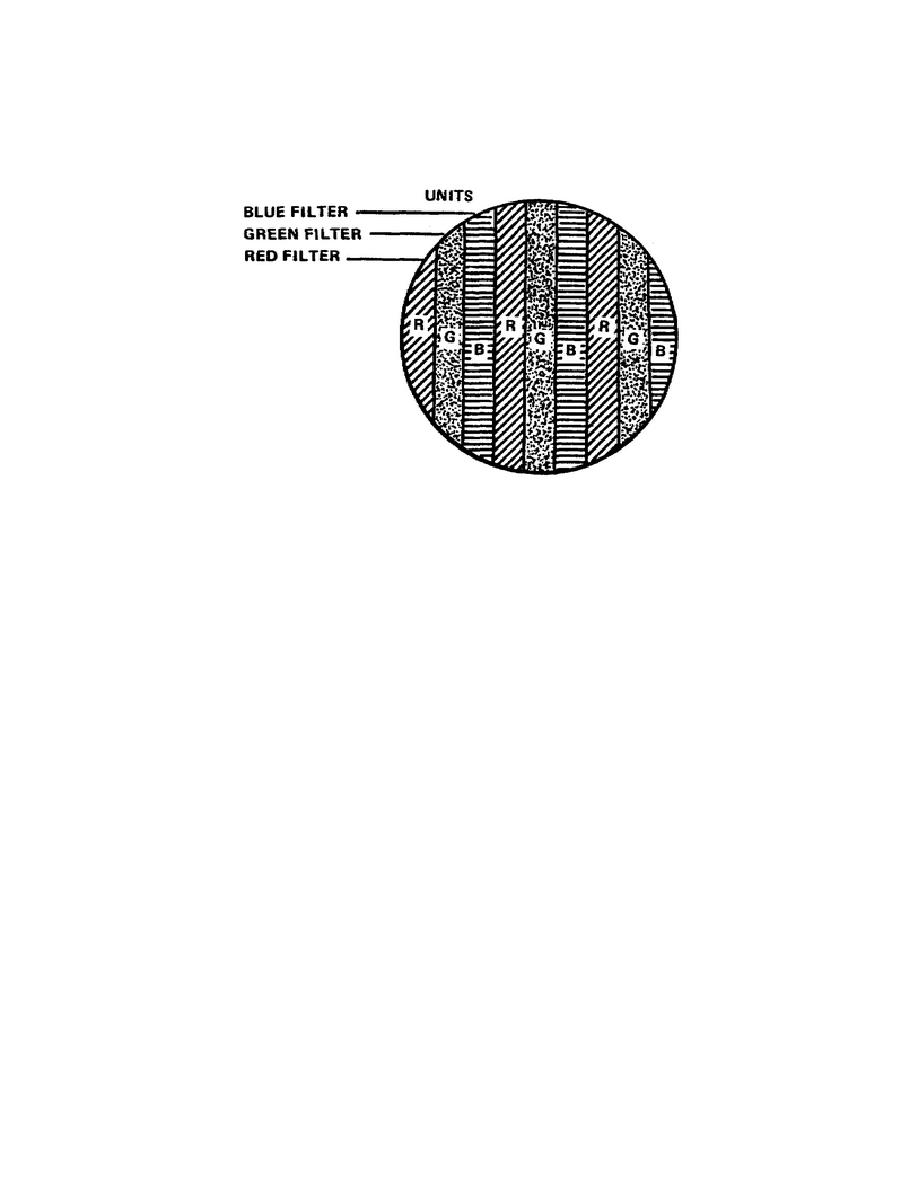
(3) The stripe filter.
The third color separation device is the
stripe filter that makes up the front surface of the pickup tube of a single
gun camera.
The incoming light is directed into a specific color and
translated into the video signal (fig 1-8).
Figure 1-8.
Stripe filter system
b. Chrominance and luminance channels.
Because the three channels
process the primary light colors of red, green, and blue, they are called
chrominance channels (from the Greek chroma, a color). But as you may know
from painting or color printing, the colors alone are usually not sufficient
to give the picture the necessary crispness and depth. Besides the colors,
a good picture needs to show variations in brightness, from white to various
shades of gray to black.
TV pictures are no exception.
We perceive
monochrome TV pictures by distinguishing among brightness variations. Color
pictures get the necessary brightness variations through a separate signal,
called a luminance channel. Some of the first cameras contained a separate
pickup tube for the luminance channel.
In the present cameras, the
luminance signal is derived from the green channel, because the green signal
is strong enough to serve two purposes at once.
Sometimes, all three
chrominance signals are matrixed (electronically combined) into a monochrome
luminance signal.
c. Imaging devices.
In color cameras the principal electronic
component that converts light into electricity is called the imaging device.
There are two major types, the camera pickup tube and the charged-coupled
device (CCD), or, as it is commonly called, the chip. At the present state
of development, most cameras use the various types of pickup tubes as an
imaging device.
The image orthicon (or i-o) tube was the standard camera
pickup tube in high quality monochrome cameras and the first generation of
color cameras. But because of its large size and electronic flicker, it was
soon replaced by the smaller and more stable vidicon tube and its vastly
improved descendants.
Today all pickup tubes are improved models of the
original vidicon tube.
12



 Previous Page
Previous Page
